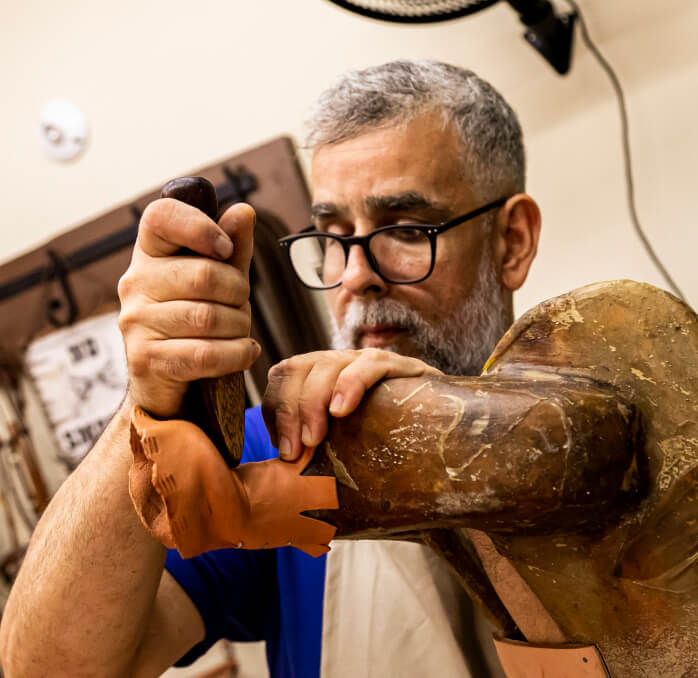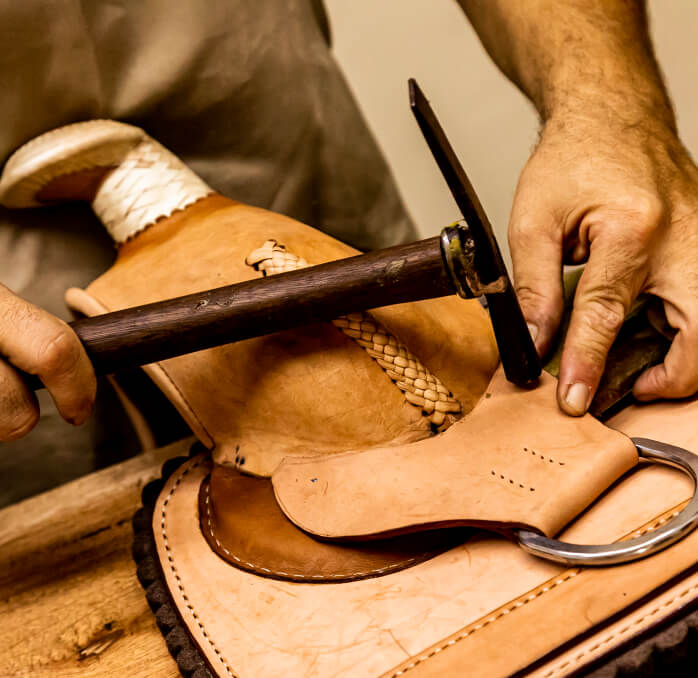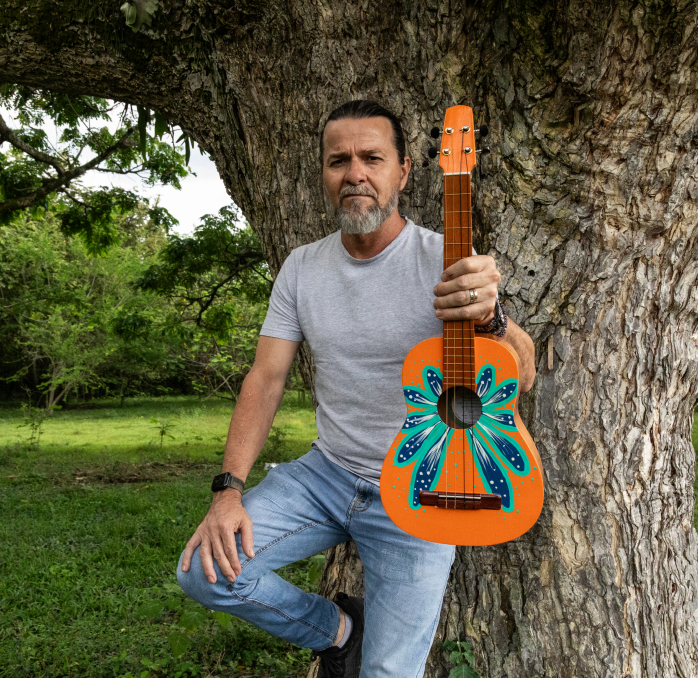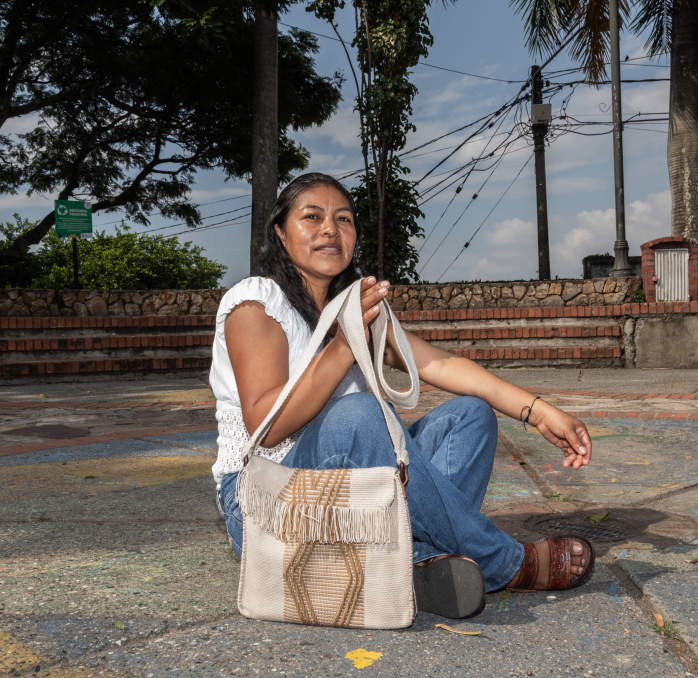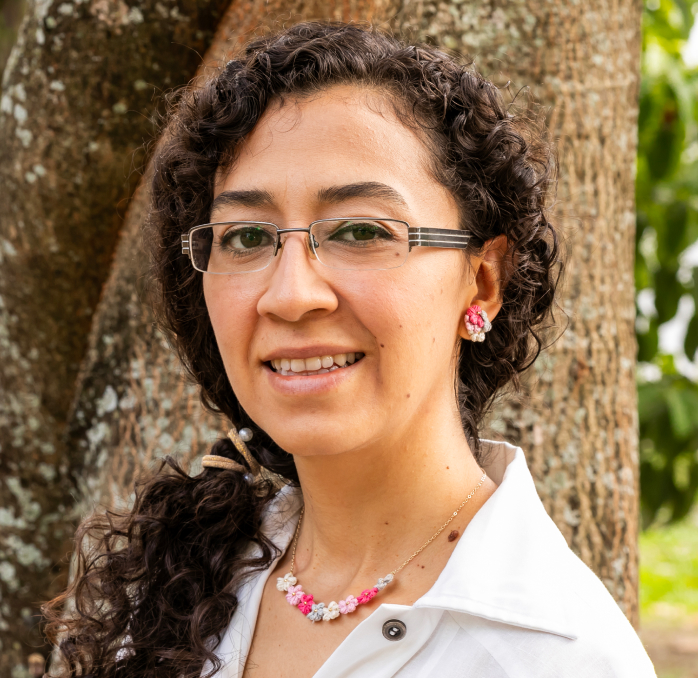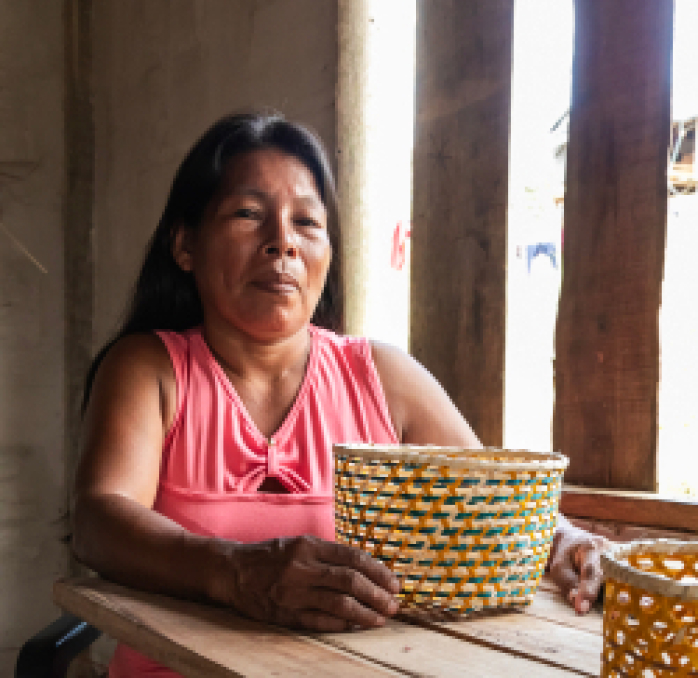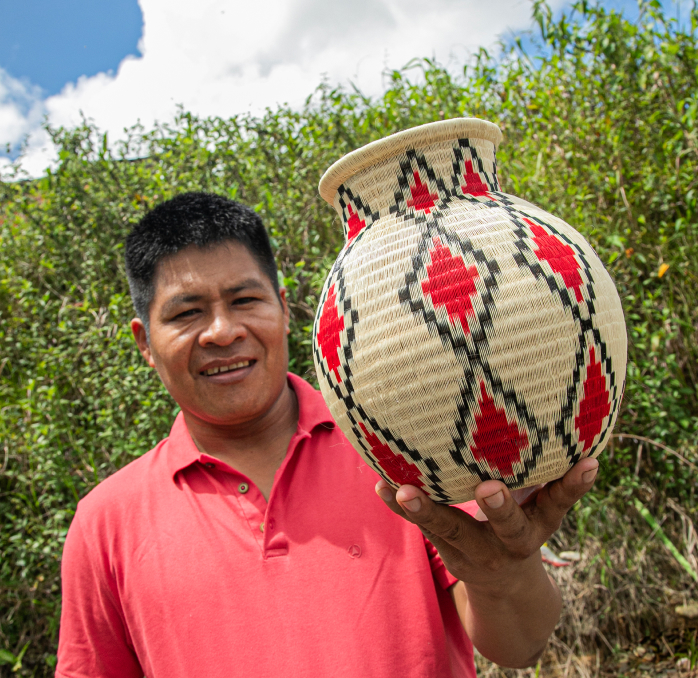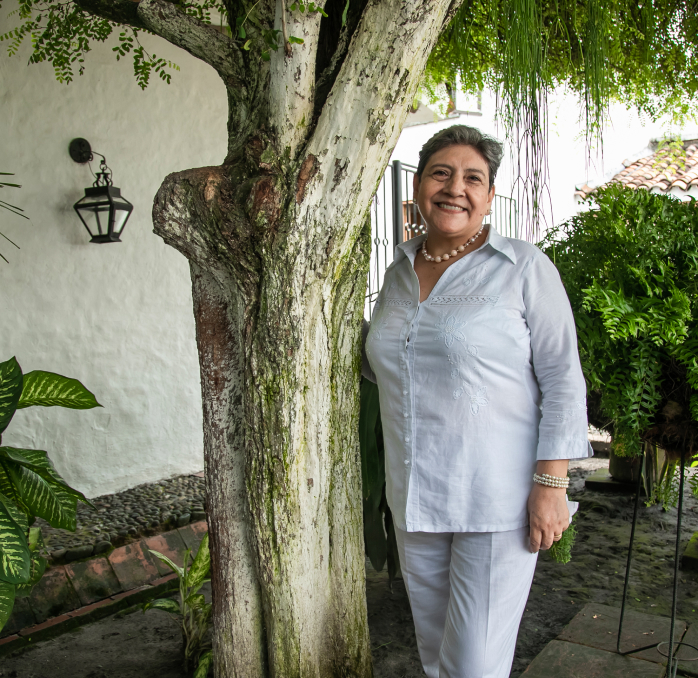Jerónimo Jaramillo Correa
Workshop: Jaramillo's artesanos del cuero
Craft: Marroquinería
Trail: Valle del Cauca route
Location: Buga, Valle del Cauca
SCHEDULE YOUR VISIT
Calle 8 # 7-60, Buga, Valle del Cauca
3103952168
Jjcueros@gmail.com
@jaramillos_artesanos
The toys that Jerónimo played with during his childhood were the tools and leather in his father’s workshop, Iván Jaramillo. His favorite was the awl, typically used for punching sewing holes in the leather, but Jerónimo would nail it to different surfaces as part of his games. He also used a wooden tool intended for marking and shaping damp leather to create figures. Even now, he holds onto the mallet he played with, a memento from his father, who arrived in Buga, the city of the Christ of Miracles, at the age of 24. His father came from Jericó, Antioquia, the birthplace of Saint Mary Laura of Jesus and the traditional leather bags known as guarnieles.
Jerónimo is deeply moved by the memories of his childhood, a time when he fell in love with the craft he has dedicated his entire life to. Beyond being his livelihood, it’s his passion. He used to observe his father working from sunrise to bedtime in the workshop located within their home. The entire family was involved in the process. Being the youngest of four siblings, Jerónimo grew up watching his older brothers working with leather. At the age of 11, he made the decision to speak with his parents and express his resolution: he wanted to study in the morning and learn the family craft in the evening. His parents supported his decision, and he created his first piece—a leather ring for his mother. He then began utilizing leftover scraps to craft key cases. By the time he turned 13, he was fully integrated into the team. He recalls completing his homework as quickly as possible to ensure ample time for his true passion—working with leather.
Jerónimo’s grandfather, Pablo Jaramillo, used to raise horses, and Jerónimo fondly remembers watching his father create saddles and bridles. These horse-related items evoke memories of his father, who passed down the love for horses that he inherited. According to Jerónimo, the handmade nature of these horse gears is what imbues them with their magic. In the creation process, many people are involved. A fustero constructs the wooden base within each saddle, customized to the required size and style. A blacksmith forges the steel components of leashes, buckles, and stirrup skeletons. Another individual handles the tanning and dyeing of the leather, which is later used by Jerónimo and his coworkers. Once the leather arrives at the workshop, tasks are divided among four people. They undertake the initial upholstery of the wooden base using raw leather, create foam seating, work on the skirt, stirrups, girth, and leashes. The tanned leather is dampened, shaped with wooden tools, and then secured with nails. After the leather dries, the nails are removed, and stitches are sewn by hand using waxed threads made of cotton or high-quality polyester. Crafting a saddle takes around twelve days, and Jerónimo presently collaborates with the same suppliers his father once worked with. He has also inherited his father’s connections.
In addition to saddles, they handcraft wallets, glasses cases, bags, belts, key rings, and various custom orders, excluding shoes. Jerónimo partners with his brother, Oscar Humberto, and each day presents new challenges. Their clients bring them a diverse array of requests, ranging from saddle repairs to watch strap crafting to learning how to create their own leather accessories. Jerónimo has two children, Jacobo and Gabriela. Both of them attend school and Jerónimo strongly encourages their commitment to education, a value instilled in him by his mother, Ferney Correa de Jaramillo. Jerónimo welcomes his children’s involvement in the workshop’s activities and has witnessed their fascination with the tools he once played with as a child. They have proven to be a magnet for every curious child.
Craft


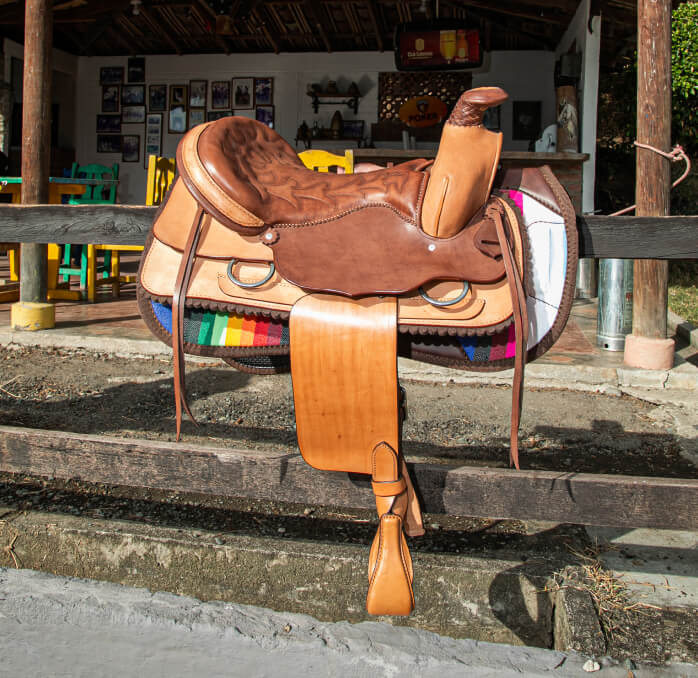
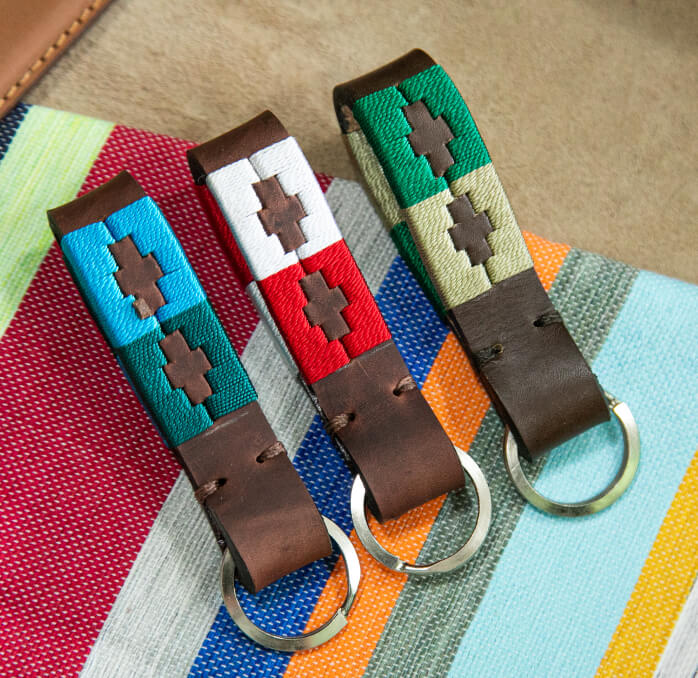

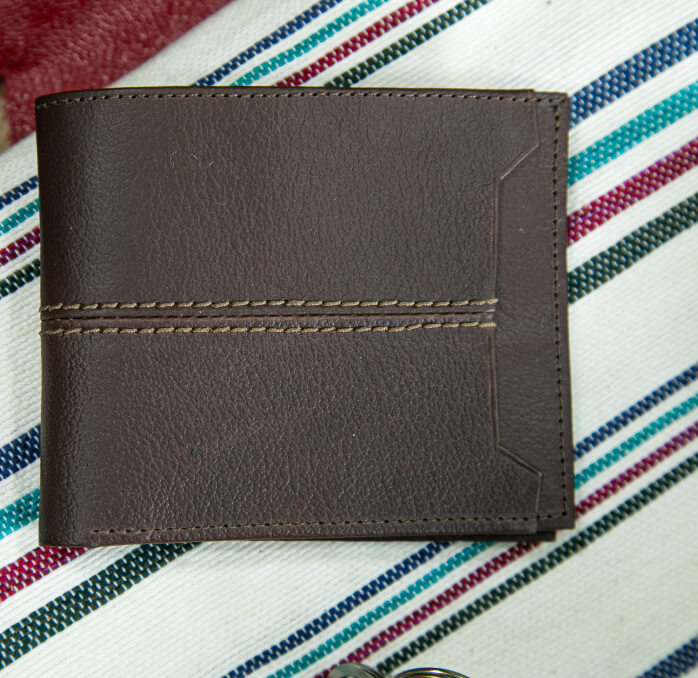






Artisans along the way
Artisans along the way
No puede copiar contenido de esta página











































